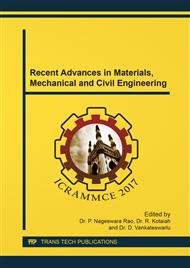p.276
p.282
p.289
p.294
p.299
p.305
p.313
p.320
p.327
Evaluation of Performance Point of Structure Using Capacity Spectrum Method
Abstract:
Performance-based seismic design (PBSD) is an approach, in which the design aim is to deliver a structure capable of meeting certain predictable performance objectives under different levels of earthquake motions. In order to ensure the desirable performance of buildings or structures, the structural parameters such as strength, stiffness and ductility or deformability should be reasonably proportioned. Conventional methods of seismic design have the objectives to provide life safety (strength and ductility) and damage control (serviceability drift limits). However, little information is available on how the building reacts to a seismic hazard. The basic concept of PBSD is to provide the engineers with the capability to design buildings that have a predictable and reliable performance in case of a seismic hazard. This procedure compares the capacity of a structure (in the form of a pushover curve), with the demand imposed by the earthquake on the structure (in the form of response spectra).The present paper determines the performance point of the structure, using Capacity Spectrum Method (CSM). A 7-storey building has been considered for this purpose and pushover analysis is carried out. An attempt has been made to perform the seismic analysis for the building, to obtain the performance point.
Info:
Periodical:
Pages:
299-304
Citation:
Online since:
February 2018
Authors:
Price:
Сopyright:
© 2018 Trans Tech Publications Ltd. All Rights Reserved
Share:
Citation:


